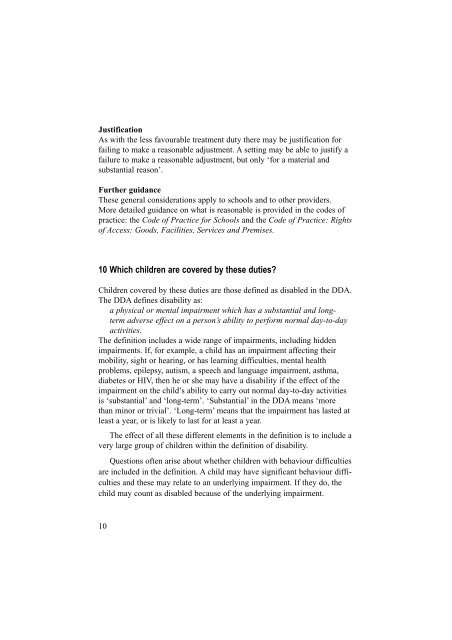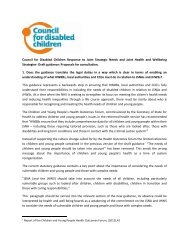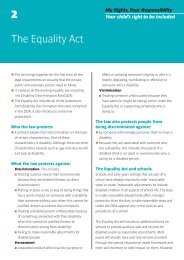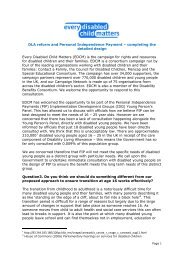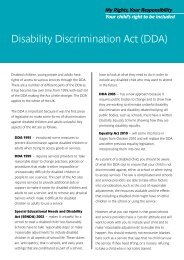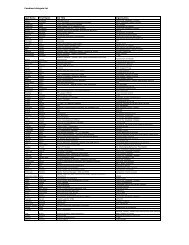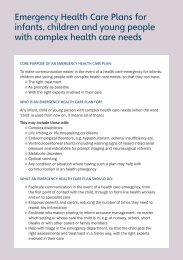Early years and the Disability Discrimination Act 1995 What service ...
Early years and the Disability Discrimination Act 1995 What service ...
Early years and the Disability Discrimination Act 1995 What service ...
You also want an ePaper? Increase the reach of your titles
YUMPU automatically turns print PDFs into web optimized ePapers that Google loves.
Justification<br />
As with <strong>the</strong> less favourable treatment duty <strong>the</strong>re may be justification for<br />
failing to make a reasonable adjustment. A setting may be able to justify a<br />
failure to make a reasonable adjustment, but only ‘for a material <strong>and</strong><br />
substantial reason’.<br />
Fur<strong>the</strong>r guidance<br />
These general considerations apply to schools <strong>and</strong> to o<strong>the</strong>r providers.<br />
More detailed guidance on what is reasonable is provided in <strong>the</strong> codes of<br />
practice: <strong>the</strong> Code of Practice for Schools <strong>and</strong> <strong>the</strong> Code of Practice: Rights<br />
of Access: Goods, Facilities, Services <strong>and</strong> Premises.<br />
10 Which children are covered by <strong>the</strong>se duties?<br />
Children covered by <strong>the</strong>se duties are those defined as disabled in <strong>the</strong> DDA.<br />
The DDA defines disability as:<br />
a physical or mental impairment which has a substantial <strong>and</strong> longterm<br />
adverse effect on a person’s ability to perform normal day-to-day<br />
activities.<br />
The definition includes a wide range of impairments, including hidden<br />
impairments. If, for example, a child has an impairment affecting <strong>the</strong>ir<br />
mobility, sight or hearing, or has learning difficulties, mental health<br />
problems, epilepsy, autism, a speech <strong>and</strong> language impairment, asthma,<br />
diabetes or HIV, <strong>the</strong>n he or she may have a disability if <strong>the</strong> effect of <strong>the</strong><br />
impairment on <strong>the</strong> child’s ability to carry out normal day-to-day activities<br />
is ‘substantial’ <strong>and</strong> ‘long-term’. ‘Substantial’ in <strong>the</strong> DDA means ‘more<br />
than minor or trivial’. ‘Long-term’ means that <strong>the</strong> impairment has lasted at<br />
least a year, or is likely to last for at least a year.<br />
The effect of all <strong>the</strong>se different elements in <strong>the</strong> definition is to include a<br />
very large group of children within <strong>the</strong> definition of disability.<br />
Questions often arise about whe<strong>the</strong>r children with behaviour difficulties<br />
are included in <strong>the</strong> definition. A child may have significant behaviour difficulties<br />
<strong>and</strong> <strong>the</strong>se may relate to an underlying impairment. If <strong>the</strong>y do, <strong>the</strong><br />
child may count as disabled because of <strong>the</strong> underlying impairment.<br />
10


